#20th-century architectural styles
Text
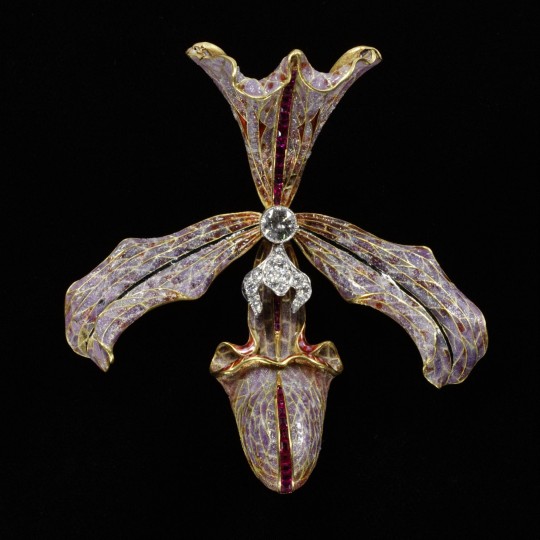
Hair ornament of gold, enamel, diamonds and rubies in the form of an orchid, made by Philippe Wolfers, Belgium, 1905-7. Art Nouveau Style.
📸 Victoria and Albert Museum
#dark academia#light academia#academia aesthetic#classical#academia#escapism#classic literature#books#books and libraries#architecture#art nouveau#jewellery#style#1900s#20th century#victoria and albert museum#philippe wolfers#belgium#gold#diamonds#rubies#royalcore#cottagecore#princess core#aesthetic#mood#vibe#hair ornaments
77 notes
·
View notes
Text

“Mannequin Head”
Painted Plaster, 1925.
Victoria and Albert Museum.
It's been a while since I last made a post, let alone one about an architectural aesthetic. I've been meaning to post research on statues, but here we are, almost one year later, and this is the statue I've managed to make our first.
Art Deco is one of, if not the most favorite styles of mine. I'm a gigantic nerd for Bioshock, and whenever we come back from our OCMD trip, it's a tradition to force my friends to drive through Philly so we can get pictures of the different Art Deco buildings. Now, Art Deco was an architectural style, but that doesn't mean it didn't influence the culture around it. What do you think of when the 'roaring twenties' is brought up? The Great Gatsby? Flappers? Mobsters? The Volstead Act (Prohibition)? Those ghastly hoof shoes? ...Bioshock... (Okay, shut up about Bioshock, Kait. They're not gonna make another one *cries internally*). Art Deco will forever be at the forefront of all those beautiful things; even thinking about the sixties will conjure up hints of that style since that was the technical revival period!
Not to sound like that one Twitter/X user, but the United States of America honestly was supposed to be Art Deco. It's a disappointment, an absolute travesty, that we lost that part of our identity due to costs and resources funding war instead. Win some, lose some, but it sucks to suck, and now look at us. However, the U.S. wasn't the only country that made prime fashion from this aesthetic design. The statue above, a display head (which ironically is not on display), was made in France, the same year as the Exposition internationale des arts décoratifs et industriels modernes (an exhibition of the same significance as the World's Fairs; basically where Art Deco got its name from).
At first, I was weary, despite the V&A website listing this as Art Deco because the display's curvature gives more Art Nouveau vibes. But upon reading that similar mannequins made their stylistic debut at the 1925 Paris Exhibition—the setting stone for the Art Deco movement—it's only right to consider this the bridge between the two styles, a blend that would eventually branch out into the wonderful relics we see today.
Although the creator of this head is unknown, the V&A website does provide some fruitful trivia: the head's structural features share qualities of work done by the late Amedeo Modigliani, an Italian painter and sculptor who passed in France, and the head's painted skin featuring qualities shown in works by Henri Matisse, a French painter and sculptor (you more than definitely know his art).
Art Deco is a style that has seen its time, but it will never die, as it is a golden ghost with geometric shapes and hypnotic patterns that stand out from the modern and the olden styles. The fact that this piece isn't on display (according to the V&A site) is absolutely mind-boggling, as it shows what once was and what could still be the beauty introduced and influencing the echoes of greatness.
===
Sources:
Post's Subject // "Art Deco" - Victoria and Albert Museum
Post's Subject // "Mannequin Head" - Victoria and Albert Museum
1925 Paris Exhibition // "The Exhibition That Started An International Style: Art Deco" - Metropolis
1925 Paris Exhibition // "International Exhibition of Modern Decorative and Industrial Arts" - Wikipedia
Artist Mentioned: Biography of Amedeo Modigliani - Modigliani
Artist Mentioned: Biography of Henri Matisse - Henri Matisse
~~~
Text:
All here is written by me.
- - - Stupid Little Note Below - - - //
I've been seeing too many posts with added history written by A.I., which is really stupid, considering that those types of technologies are wrong and don't list the specific data they utilize to get their information. Because I'm very wordy or know certain things doesn't mean I use a bot... you'd probably know if I did because I'd be posting every day💀 Instead, I bestow upon you real human text, an info-dump on a random thing I find online and think is pretty and/or interest asf, promises I can't deliver (aka I severely forget about or am too busy to do *rip March's posts lmfao*), and horrifically inconsistent posts.
I may make grammar mistakes here and there because I am also writing a book in my free time (that's why I'm usually too stressed to make posts—trust me, you should see my drafts—they're there, but I love to add info, yet it's time-consuming). My Grammarly hates me, and the feeling is as mutual as glass. I felt the need to get that out of the way, too.
I'm now adding all my sources so nobody mistakes this as A.I. garbage. It's not! I should've done this from the get-go, but it didn't feel necessary at first, as I barely did info posts. But if you do see something off, or you just enjoy this post and want to add to the conversation, please feel free to comment!! :)
Thank you (and I will probably make this a separate textpost, too);
Kaiti <3
#art#history#artwork#french#french art#20th century#1920s#1925#victoria and albert museum#art deco#art nouveau#art history#paris#paris exhibition#architecture#statue#mannequin#art deco style#aesthetic#art deco aesthetic#1920s aesthetic#amedeo modigliani#henri matisse#plaster#roaring twenties#1900s#1920s art#1920s fashion
3 notes
·
View notes
Text

Walter Gropius - Bauhaus State School (1919)
#architecture#bauhaus#bauhaus style#design#architects#architect#designers#art history#art#1910s#1919#1900s#20th century
7 notes
·
View notes
Text

Pasillo interior de la Nueva Cancillería del Reich (construida entre 1934 y 1943)
20 notes
·
View notes
Text

Toronto in the 1900s was a different city from the one we know today.
The center of business had moved west of the historical Town of York site and the skyline was undeveloped.
The tallest structures were the Temple Building at 10 stories and the Trader’s Bank Building at 15 stories.
A new downtown to the west of Yonge and King Streets was built. The City of Toronto moved into a new City Hall, built at the head of Bay Street at Queen Street.
Much of this new downtown was destroyed in the Great Toronto Fire of 1904, but it was quickly rebuilt, with new taller buildings.
South of downtown, the railways dominated most of the lands. A new viaduct was built to carry the main lines and eliminate the many at-level crossings.
A single Union Station was built to replace the several railway stations of the rail lines. It sat empty for a while over disagreements between the government and the rail companies.
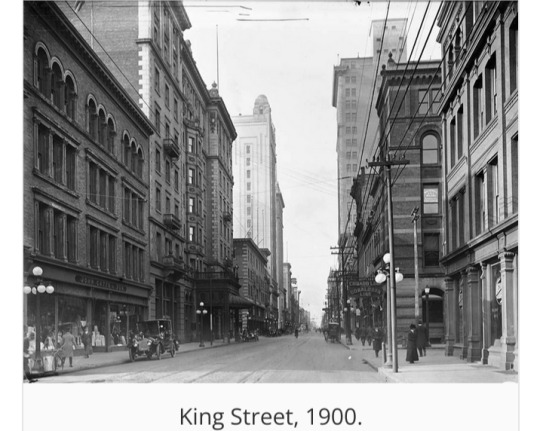
In the late nineteenth century, Toronto welcomed the rise of Victorian architecture, as well as many of its revival styles.
This style of architecture was thought to be more modern, unique and creative than its successor, characterized by steep gabled roofs, round angles, towers, turrets and dormers, shapely bay windows, stained glass, centric carved woodwork, and bright colored paneling.
This style lent itself well to narrower lots, and thus, Victorian-style housing was most abundant in the city’s traditionally middle-class neighborhoods where individual properties were smaller, most notably Cabbagetown, Trinity-Bellwoods, Parkdale, and The Annex.
These neighborhoods held some of the largest collections of Victorian houses in North America.
Specifically, houses constructed in the Annex developed an individual iteration of the Victorian style, called the “Annex Style House.”
This style contained a variety of diverse and eclectic elements borrowed from many different styles.
Most distinctively, these houses were built of a mix of brick and sandstone, turrets, domes, and decorative ornamentation.
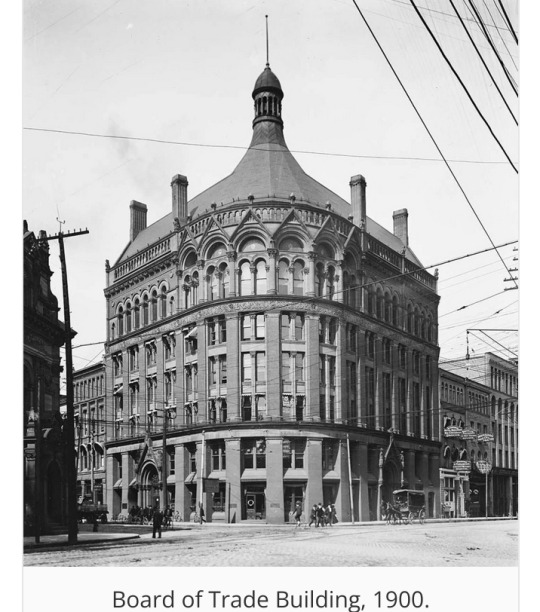
The city received new European immigrant groups beginning in the late 19th century into the early 20th century, particularly Germans, French, Italians, and Jews.
They were soon followed by Russians, Poles, and other Eastern European nations, in addition to the Chinese entering from the West.
As the Irish before them, many of these migrants lived in overcrowded shanty-type slums, such as “the Ward,” which was centered on Bay Street, now the heart of the country’s Financial District.
As new migrants began to prosper, they moved to better housing in other areas, in what is now understood to be succession waves of settlement.
Despite its fast-paced growth by the 1920s, Toronto’s population and economic importance in Canada remained second to the much longer-established Montreal, Quebec.

The Great Depression of the 1930s reversed the employment trend, with approximately one-fourth of the Toronto population unemployed and caused severe financial problems for suburban Toronto.
Capital debt payments could not be met and expenditure on public services—sewage and piped water supply in places remote from the lake, for example—had to be postponed.
However, World War II’s demands for war supplies and soldiers soon changed the employment picture.
Following the war, and into the 1960s, times were prosperous throughout North America.
Toronto’s economy diversified and boomed, greatly altering the cultural and spatial pattern of the city.
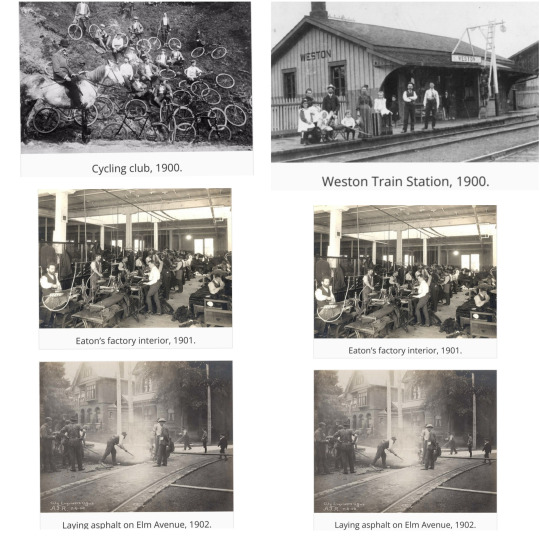
Other factors after the war included the baby boom, demand for single-family dwellings, and the proliferation of the automobile.
Suburban sprawl was assisted by the increase in road networks and freeways, thereby consuming some of the best agricultural land in the region.
By 1953, a reorganization of local government had been created, along with the Corporation of Metropolitan Toronto, in an attempt to control development in the surrounding regions.
Suburban growth continued. In 1966, new City of Toronto boundaries were drawn, amalgamating 13 communities, with the Metropolitan government still in place.
By the 1976 census, Toronto passed Montreal to become the largest city in Canada, and the gap between these two cities continued to grow.
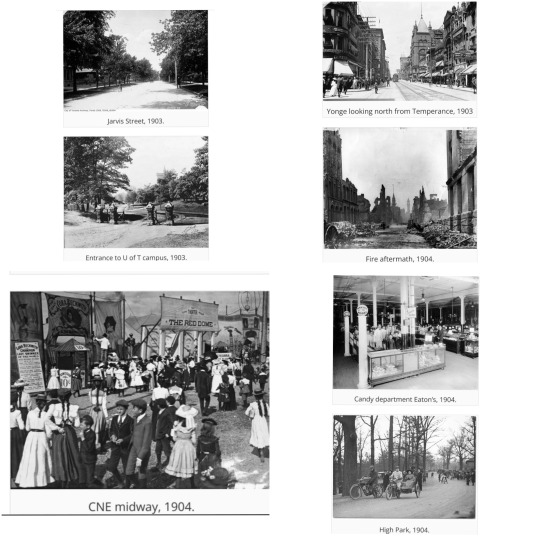

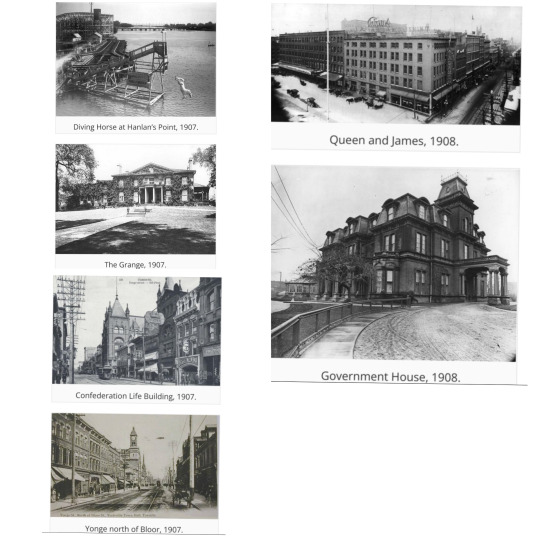


(Photo credit: City of Toronto Archives / BlogTO / Wikimedia Commons / Britannica / Flickr).
Updated on: February 6, 2023
#Toronto#1900s#20th century#Great Toronto Fire of 1904#Victorian architecture#Annex Style House#19th century#Great Depression of the 1930s#Rare Historical Photos#vintage photos#Victorian houses
14 notes
·
View notes
Text

Castromil buiding in Santiago de Compostela, by the Galician architect Rafael González Villar (1887-1941).
In 1975, forty-eight years after its construction, it got demolished to build a parking lot.
#architecture#Galicia#Santiago de compostela#Galician art#vintage building#eclectic style#20th century art#rafael gonzalez villar#Rafael González Villar#vintage photography#1920s#old photography#old photos
3 notes
·
View notes
Text
why does catholic architecture go so hard

#i visited a local cathedral last week#well technically it's anglican#but it was built in 13th century#...but also renovated a lot throughout 18-20th centuries#so idk really#is there even a big difference between anglican and catholic styles in architecture?
2 notes
·
View notes
Text

Concealed within the city’s busy streets, a breathtaking architectural gem emerges, its neo-Gothic influences and hexagonal turret commanding attention.
This early 20th-century chalet-style palace, commissioned by a local resident, was designed by a renowned engineer, showcasing the city’s rich heritage. Adorned with verdant tiles and a beautifully adorned stairway, the building’s decorative elements hint at the Art Nouveau movement.
The fate of this captivating structure hangs in the balance, its future uncertain as the city grapples with preserving its rich heritage. Will this palace-like gem reclaim its former glory? Or will it continue to languish.
Source: Jeroen Taal
440 notes
·
View notes
Text
So, Wizarding Robes
I saw this post by @iamnmbr3 and @kittenjammer talking about wizarding fashion and I wanted to talk about this for a while, so I'm going to give my own two cents on it based on fashion history. I love history in general, but fashion history and historical architecture are two I’m incredibly passionate about. So, here we go (post with a lot of pictures ahead):
When I read the books and they mentioned unisex “robes” which function like dresses in a way (as you don’t have to be wearing trousers beneath them:
James whirled about; a second flash of light later, Snape was hanging upside down in the air, his robes falling over his head to reveal skinny, pallid legs and a pair of graying underpants.
(OotP, 647)
And described as being very colorful and billowing, often accompanied by a pointed wizard hat, it was clear to me JKR was trying to invoke the image of the classic fantasy wizard robe:

Especially when it comes to Dumbledore.
The thing is, this style is based on a real historical period and historical styles of the medieval period in Europe.
Medieval Europian Robes
When I'm thinking about the "classic fantasy wizard look" the first historical period that comes to my mind is the 15th century and I'll illustrate why.
Spesificly, the 14th and 15th centuries houppelande. It was a long over garment that looked kinda like a dress with wide, flaring sleeves available for both men and women in various shapes, cuts, and even patterns. Here are examples of some houppelandes:
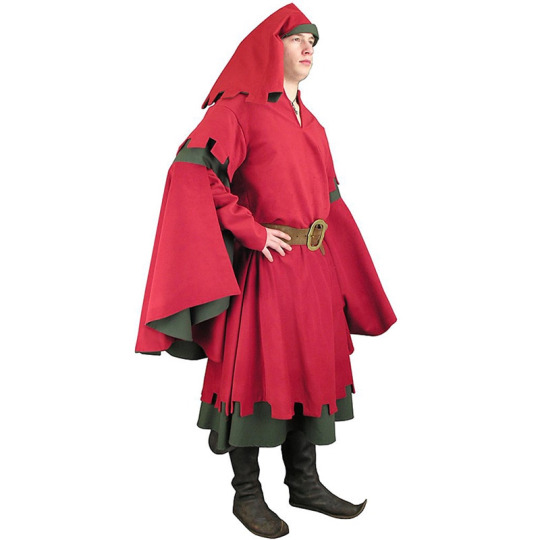
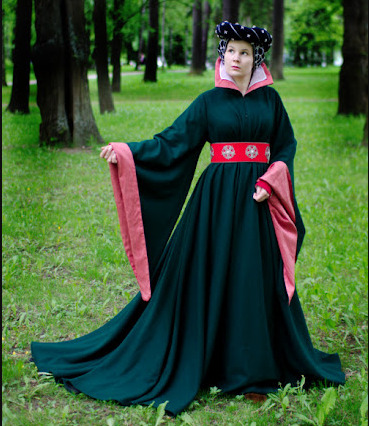




(As you can also see, early 15th-century fashion comes built-in with silly hats! Just like wizards)
In the 15th century you also have a wide array of cuts of cloaks (and even more silly hats!):
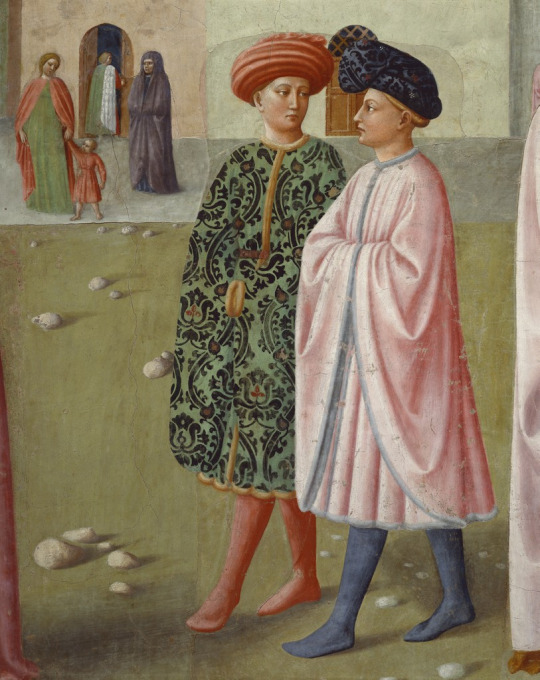
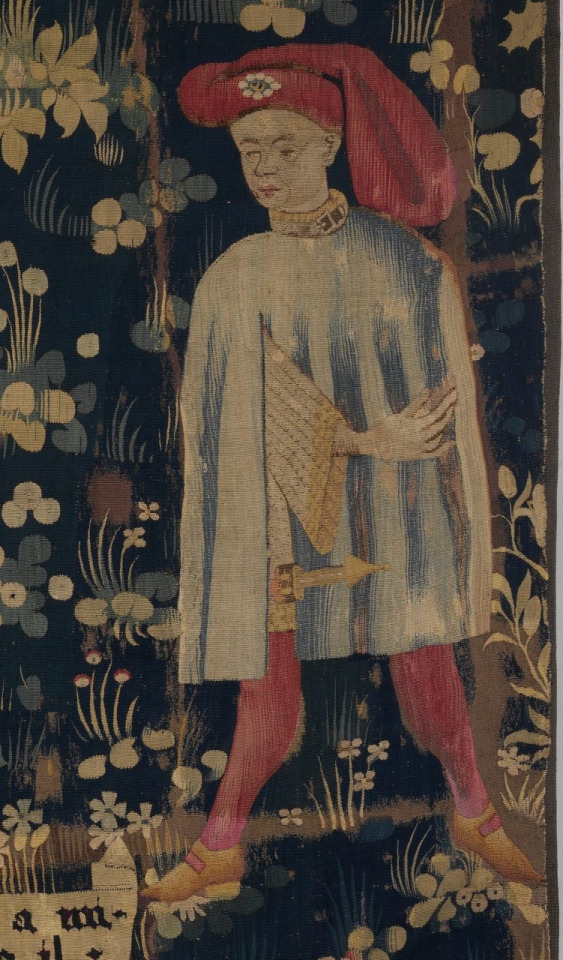
Along with surcoats, that contrary to their name, weren't just for knights to signify on their armor the house they serve:
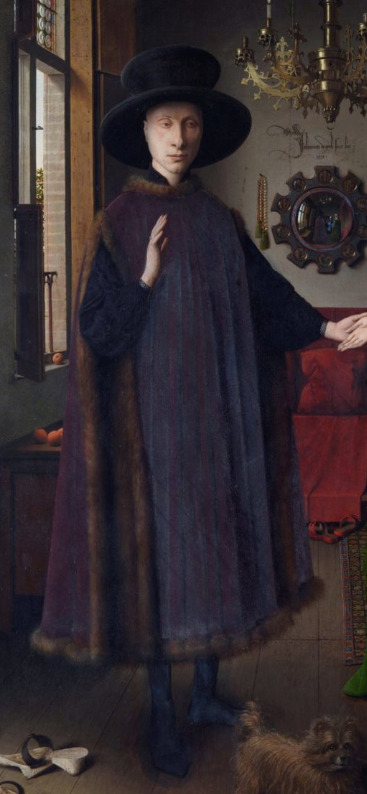

These 15th-century garments are exactly like wizard fashion is described in the books: billowing robes, colorful and eye-catching, and accompanied by silly hats.
The thing is, all these garments are from the high medieval period and as wizards broke away from muggles only when the Statute of Secrecy was enacted, I'd expect their fashion to follow the muggle trend up to that point and then start diverging. Even the most pure-blooded wizarding families of the modern day, like the Malfoys, integrated with muggle circles up until the Statue of Secrecy, something that would've forced them to dress like the muggles at the time to blend in better.
As the Status of Secrecy was first enacted in 1692, it's time to talk about:
Late 17th Century Fashion
Now, while the high middle ages in Europe had everyone wearing essentially wizard robes and silly hats on the regular, the Statue of Secrecy was enacted much later. Fashion in the 17th century was drastically different from the earlier one mentioned above.
In the late 17th century, this is the kind of dress I'd expect from women in England:
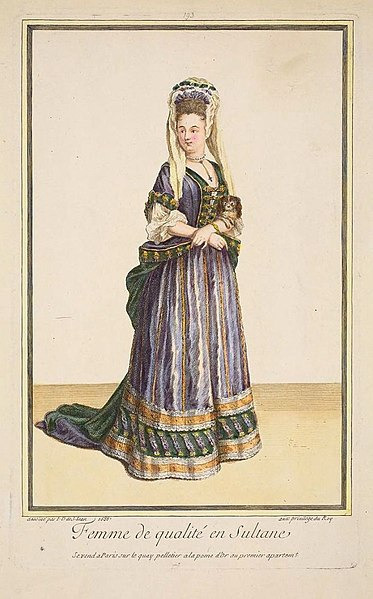
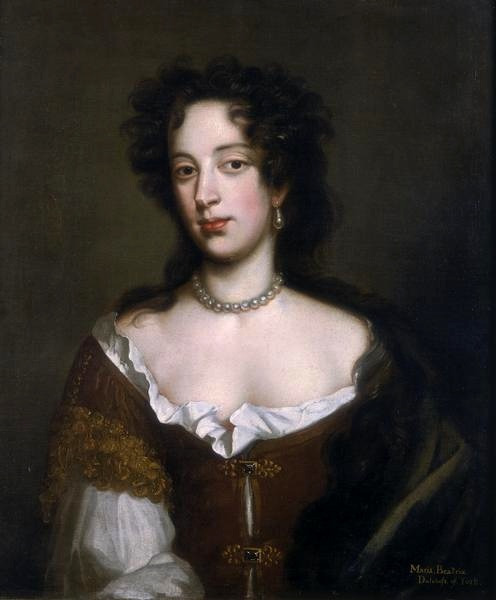
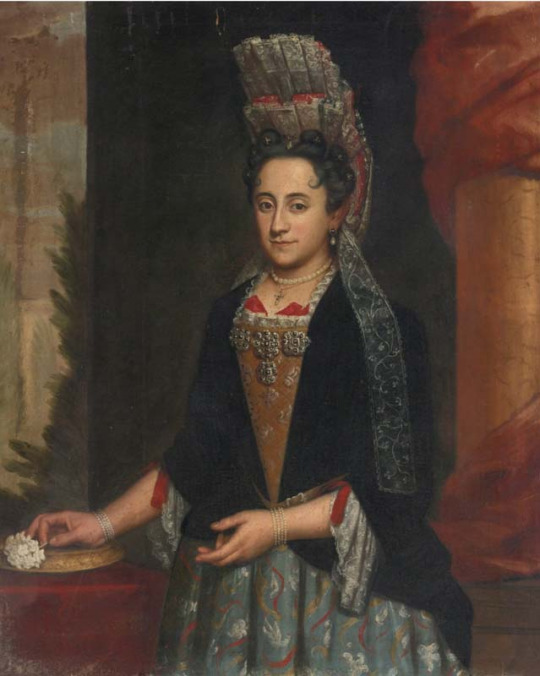

And this is what I'd expect from men:


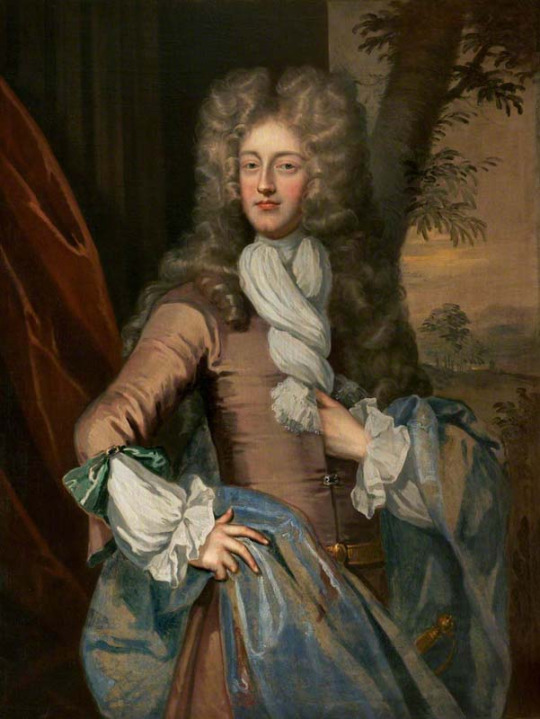
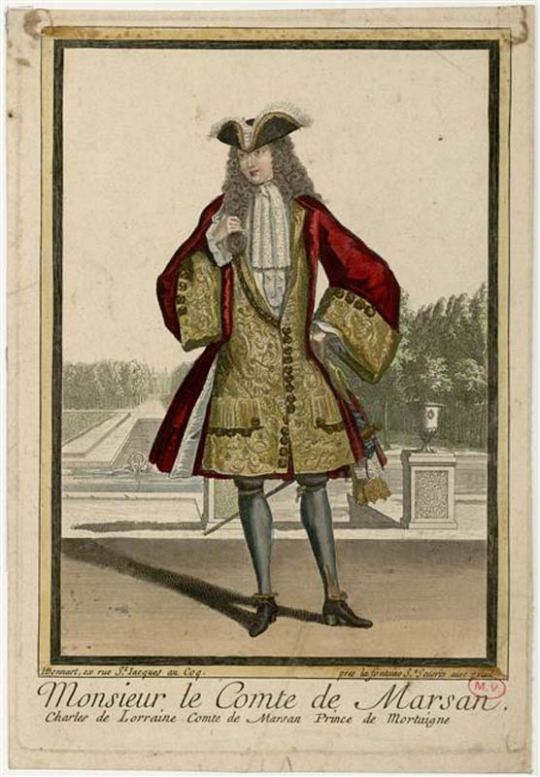
Which is very different from what is described but would've been the historical basis the wizards would work from.
So what do I think wizarding fashion is actually like?
Well, since the books are in the 1990s and wizards don't really live in a vacuum we know some later influences in fashion did make it in. So, I think wizarding fashion is an odd mix of 15th-century and late 17th-century fashions updated to the time period the wizard grew up in, hence distinct fashion changes between generations like we see in the muggle world.
We see these distinct generational fashion changes with characters like Agusta Longbottom who wears a Vulture hat. These sorts of hats with real birds on them were a thing historically. They were quite fashionable in the late Victorian era, which is when Agusta would've been a child if she's around Dumbledore's age:


Fudge is described as wearing a Bowler Hat, a kind of hat that started catching on in the late 19th century but was still a staple in menswear into the early 20th century, hence indicating Fudge's age.
Ron's yule ball dress robes are described as old-fashioned, again indicating fashions in the wizarding world change at a similar rate to the muggle one. Note that since the 17th century, fashion has been changing quite rapidly and by the 18th century fast fashion where you need to buy new garments each "season" has already started becoming a thing. With all that, I think wizard fashion indeed changes just as rapidly as the muggle one.
Now, that's great, and all, but, what would that odd mish-mash fashion even look like?
Well, I made a few very quick sketches as concept examples for what casual wizarding fashion in the UK might look like if we're working off historical references:
(not my best pieces, it's just to get the concept across)


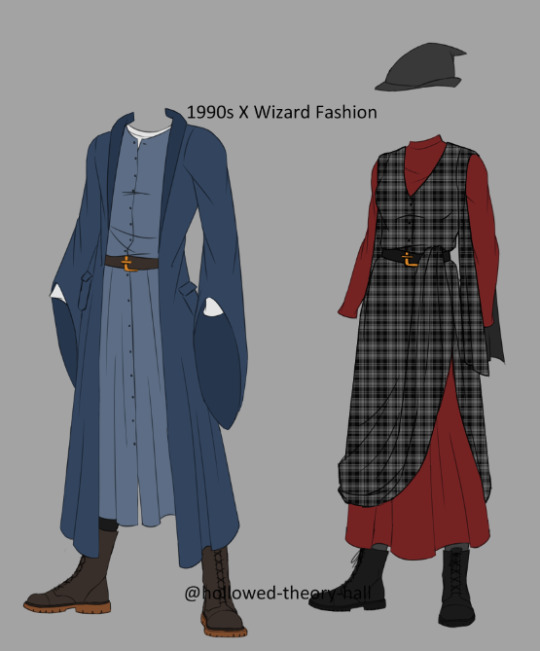
Note that Wizengamot robes and other formal professional wear would probably be older in style and closer to 17th-century fashions.
#harry potter#hp#harry potter thoughts#wizarding world#hp meta#hp headcanon#wizarding fashion#wizarding society#harry potter meta#harry potter headcanon#hollowedtheory#hollowedheadcanon#hollowedart#hollowed hp redesign
274 notes
·
View notes
Text


"Produced by Helen Hiebert in 2010"--Colophon. Title from box. Limited ed. of 25 copies, signed by the artist. Colophon on accompanying folded sheet ([4] p.).
"A book in the form of a unique lantern structure Helen Hiebert developed for her book, Paper Illuminated. Each panel of the shadow lantern features an alphabet letter cutout that casts a shadow onto a second layer of paper. The letters are in the Arts and Crafts style font designed by Dard Hunter, often referred to as the father of hand papermaking in 20th century America.
Composed of lightweight wood and paper panels in an accordion book structure, with a flexible [Japanese] hinge that allows it to be set up in a variety of ways. Each shadow lantern is stored in an architectural handcrafted box designed and produced by Claudia Cohen.
The colophon is letterpress printed by Diane Jacobs of Scantron Press"--23 Sandy Gallery Website, viewed 27 April 2011. Materials: artist-made cotton paper, machine-made gampi paper and balsa wood. Opens out to 297 cm. long.
91 notes
·
View notes
Text


A Spanish late 19th/early 20th century Nasrid Revival bone inlaid and parquetry cylinder desk
Inlaid with assorted intricate geometric shapes, patterns and motifs comprised of chequered tesserae, the open arcaded superstructure interspersed with six ring turned columns, above a cylinder roll top enclosing an architectural recess flanked by six drawers, with one frieze drawer below, over a multiple raised panelled front flanked by Nasrid style columns, with three inlaid inscriptions, one of which reads: 'la ghalib ill Allah',
Bonhams
192 notes
·
View notes
Text
IWTV S2 Ep1 Musings - Daciana: History through Visual Context in Ploiești, Romania
I immediately fell in love with The Vampire Daciana & her Romanian castle, and wanted to know more about it all.
We already know how much the set/costume designers on IWTV looooove attention to detail; they tell whole stories just through architecture, furniture, clothes, etc. So I was like OK, AMC, I see you; lemme start doing some reading up on Romania, so I can try to figure out what might be going on with Daciana. (Warning: I know eff all about Romania or Eastern Europe.)
ROMANIA
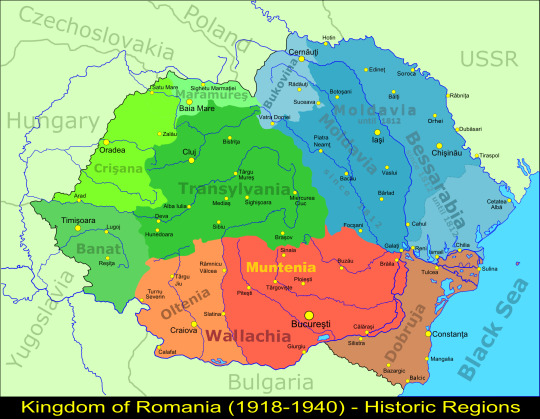
Map of Romania. Ploiești's the dot just under Muntenia, north of Bucharest, the capital. Ploiești's part of Wallachia, the IRL kingdom of Vlad Tepes (aka Dracula). Louis & Claudia went there in the 1940s, so I hope this map is accurate enough. (There's this map, but I dunno the date.)
DACIANA
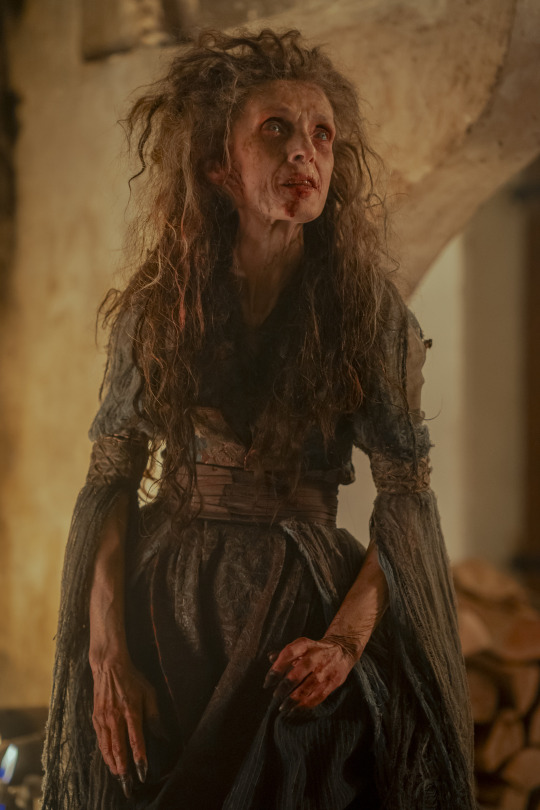
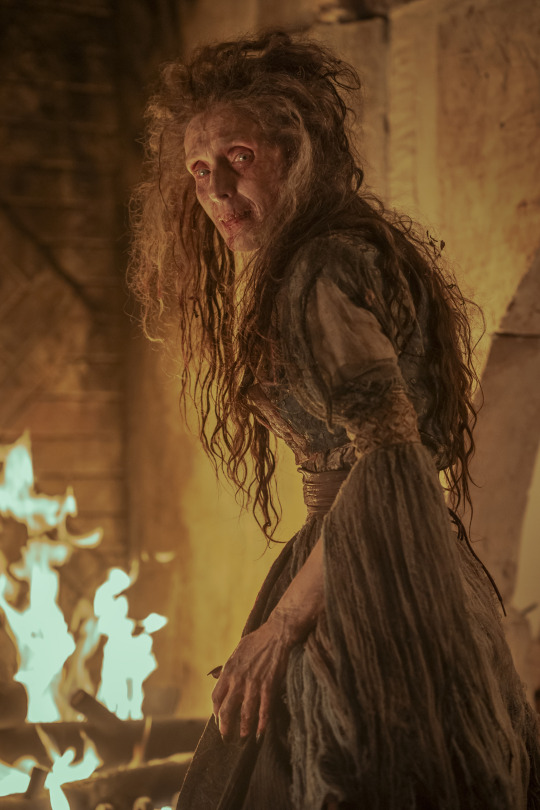
The most obvious thing about her is that she's not dressed in the typical traditional Romanian folk clothing I see all over Google, full of white-red-blue/black palettes.

Daciana's not following traditional 19th/20th-century Romanian nationalist images. Her green/brown palette & silhouette is telling, as she lacks the puffy white blouses & dark skirts. (Despite her name, I'm ruling out her being Dacian (X X)--you think you're FUNNY, AMC! But IDK about Cezare Romulo (X X); might do a Pt2!)
Sleeves
First thing's her trailing slashed open sleeves, which were screaming Medieval! at me. Here's some 15th century Renaissance examples, but with surcoats, which is different, but the sleeves reminded me of hers so IDFK.
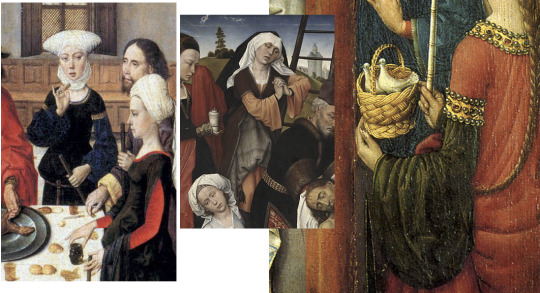
We could chalk this up to Daciana's design as just generic "medieval" fairytale stuff and keep it moving. But to give her a fair shake, I looked at local examples for anything similar that's more recent.

Traditional clothing from Huedin, Romania (north Transylvania), (X X).
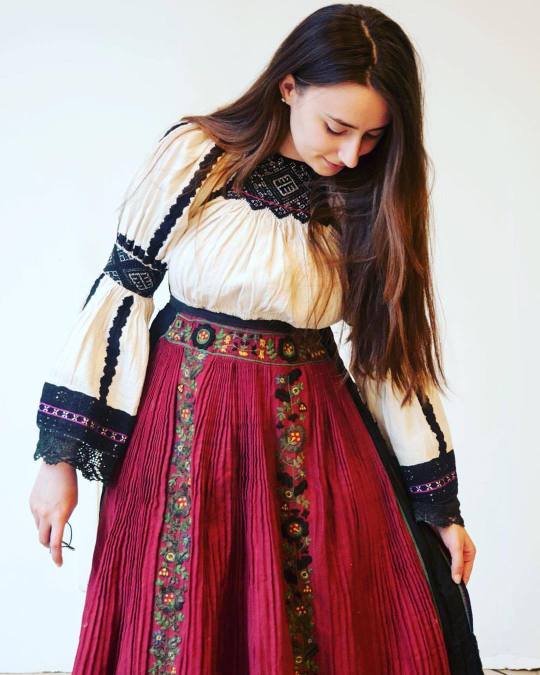
Traditional clothing from Cluj, Romania (north Transylvania).
Keep Transylvanian/Muntenian cross-cultural contacts in mind when we get to Daciana's castle, cuz it's important!

Wrt rarer non-puffy sleeves, the square cut (light blue) seems to be more prevalent in Wallachia/Moldavia/Bessarabia (southern & eastern Romania); while the rectangular cut (dark green) is all over Romania, but definitely has a concentration in Wallachia & Moldavia.
And this makes sense, cuz the style seems to also be prevalent in 19th - 20th century Bulgaria, just south of Wallachia. Hrm....

Daciana's sleeves hang very long--the only example of super long sleeves I could find is a 19th century one at the Met (C.I.47.3.4a–d). The only example of slashed sleeves I could find is in this museum exhibit at Bran Castle (yes, THE Bran Castle--I'll get to it in a minute!)
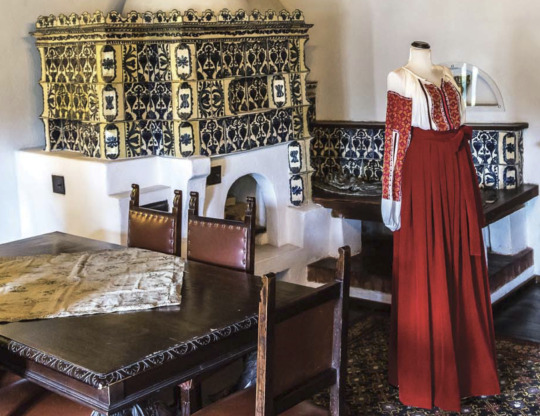
Belt, Bodice, & Fabric
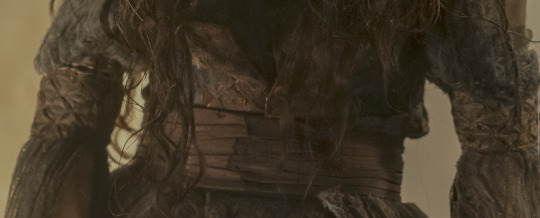
Daciana's belt is so plain compared to everything else. Is it supposed to be a leather Romanian chimir (worn by mountain/forest folk)? Those are only worn by men though? Or it depends? Or is it a just a plain cloth belt? It's reminding me of these examples (X X):

I wish I could see more of Daciana's bodice, if there's any particular kind of cut or patterns. Is the diamond netted/knotted/roped pattern on her arms significant? Her fabric is interesting, too:

What's this embroidery? Brocade? (Byzantine-Renaissance?) Damask? (c. 14th-16th century?) Lace? Something else? My brain wants to assume it's imported? Meaning: she's hella rich. Cuz like, the traditional Romanian blouse & skirt used to belong solely to peasants, b4 19th-20th century aristocrats started wearing it, too.
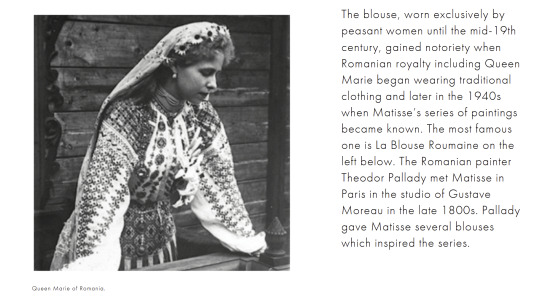
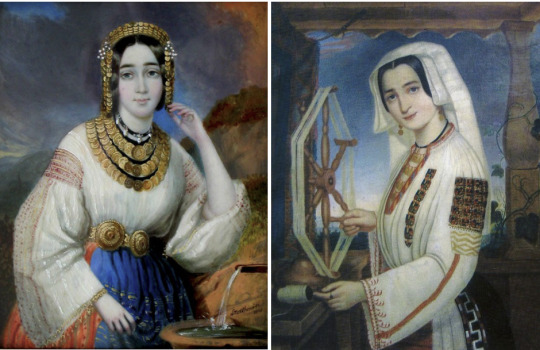
IDKY--more reading led me to a whole bunch of complicated stuff, that can probably be simplified by just saying: The Ottomans. XD

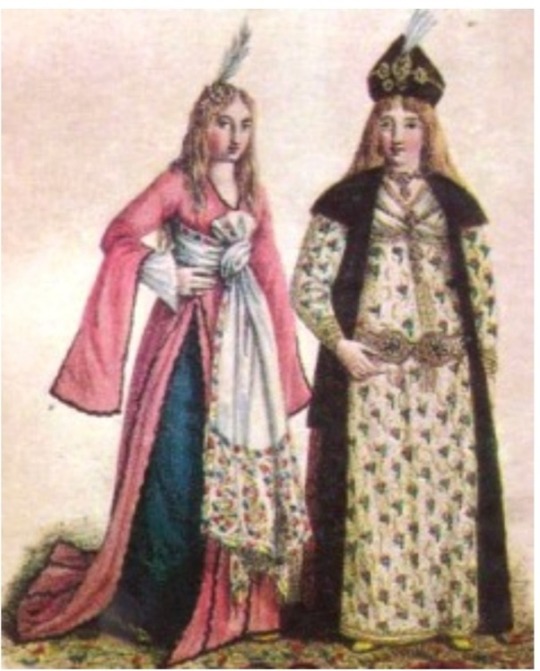
The pre-19th century Romanian aristocracy wore super opulent clothes, inspired by not just the Ottomans (X), but also the Byzantine Greeks (via 18th century Romanian Phanariote boyars (X X X)), etc. But aside from the hanging sleeves, Daciana's dress doesn't really resemble any of these foreign examples. However, it does track with my theory that Daciana predates the 19th-century Romanian nationalist/traditional clothes that became so iconic later on.
Like Louis & Claudia did, let's follow Daciana to her castle! ^0^
DACIANA'S CASTLE

I NEED to know if AMC filmed on location in Romania, or if Daciana's castle is just a studio set/green screen.
The interior's nowhere near what I expected, considering Daciana's haggard appearance. It's really nice--clean & tidy. No spiderwebs, no chipped plaster/paint, not even any bloodstains--but I've mentioned before that I think it's indicating that Daciana's a mother who takes better care of her home (and "child") than herself.
Archway
The first thing is the arch when they first come in (noticeable mostly cuz of how Louis had to bend down to get in, he's so tall).
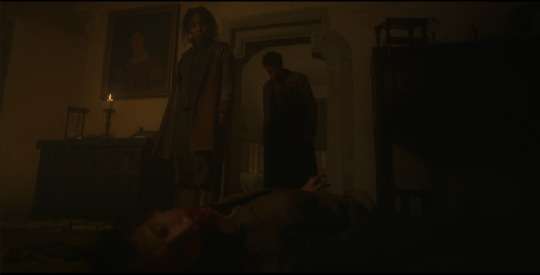
These types of doors/arches are called "shouldered arches," dating from the Medieval-Gothic periods, which Europeans adapted from Islamic architecture during the medieval Crusades. (Examples inc. Lainici Monastery in Wallachia, and the Academy of Art in Cluj-Napoca (north Transylvania).)
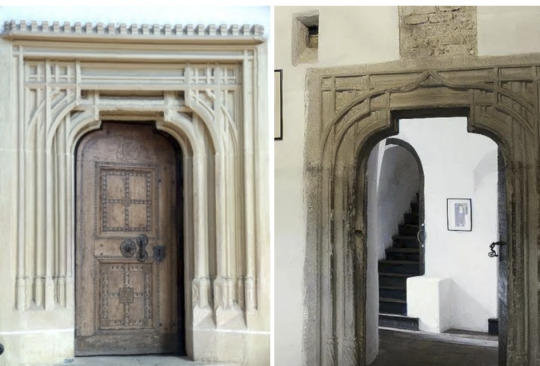
The left pic's Biertan Fortified Church, in Sibiu (south Transylvania). (Another door.) The right pic's Bran Castle, in Brasov (south Transylvania). (Another door.) (Vlad Tepes/Dracula historically never owned this castle, but pop culture says otherwise.) Both places were built by the German/Saxon Transylvanians in the 14th-16th centuries; which might help date Daciana's castle, if not Daciana herself? (The Saxon Transylvanians were in Wallachia, too.)
Wall Ornamentation
The last thing I'll discuss is the wall ornamentation/decoration:
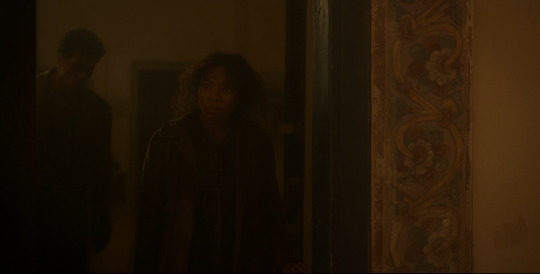
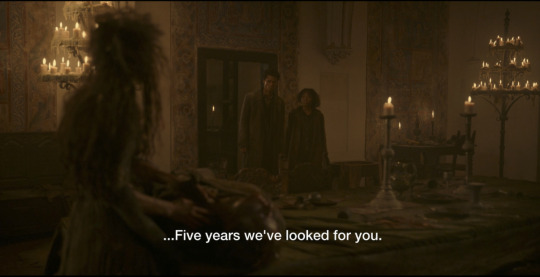
The painted floral trim everywhere instantly reminded me of The Witcher 3, as found in Hungarian, Polish, Ukranian etc buildings. Apparently the designs are all related to fertility, growth/luck, and the Tree of Life. Walls (X X X) and doors (X X) were painted. You can see northern Romanian painted ornamentation in Suceava (Bukovina).

There's painted wall designs in southern Romania, too.
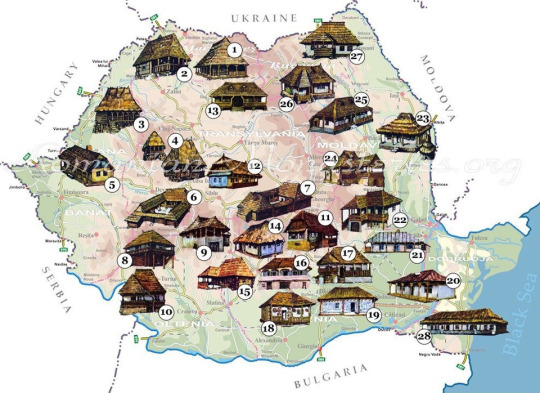
"The research of the popular interior in the Argeş and Muscel areas leads to the determination, along with a local specificity, and some Transylvanian influences, in the contact areas between southern Transylvania and northern Muntenia. In the researched areas, two lines of development of the popular interior can be observed, one relatively simple and the other complex. If the first is the prerogative of a typical Subcarpathian interior, the second represents a distinctly Transylvanian form, which was also imposed due to the presence of the Transylvanian population in the south of the Carpathians, settled in numerous villages." -- (Google Translated from Arta populară din zonele Argeș și Muscel, 1967)
(The website RomaniaDacia has A LOT to say about Transylvania, and the impact of the Germans, Saxons, Hungarians, etc on Wallachia & the rest of Romania.)

Sure enough, I was finding way more carved ornamentation (X X X X X X) than painted ones.
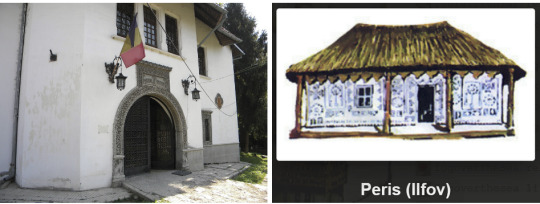
But I wonder if that's why a lot of southern traditional Romanian interiors I've been finding have totally plain whitewashed walls, too, with no painted ornaments, just tapestries (X X). I did find Romanian interior floral wall painted trims (X), but not nearly as much.
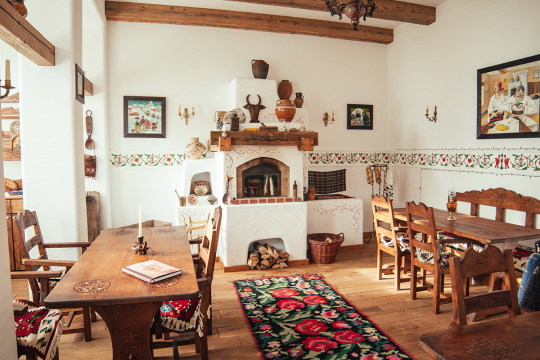
Cuz actually, the closest comparanda I was finding for Daciana was Northern European rosemaling (X X), which is also giving me medieval vibes (X); specifically: trims on illuminated manuscripts like the Book of Hours (X X X)--which we know from Lestat in S01E06.
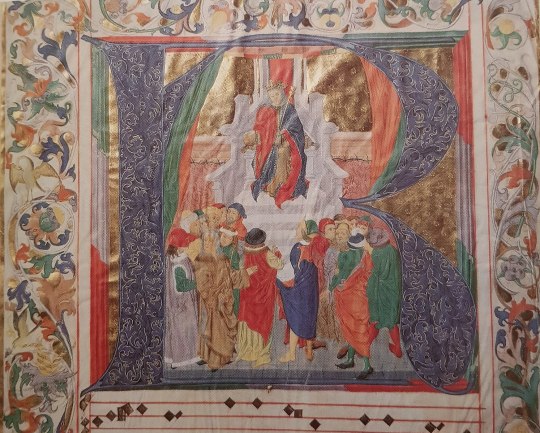
And we do see some Romanian medieval fresco borders & frescoes that had been plastered over & whitewashed, in Biertan's 15th century churches, and in 13th-15th century Darjiu (Transylvania).
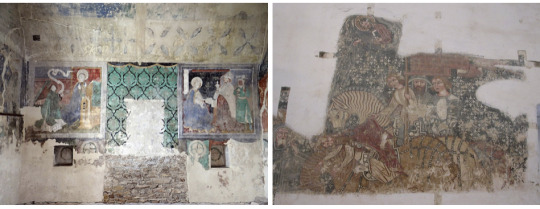
So, I wouldn't be surprised if a lot of Romanian buildings (especially castles with whitewashed plastered walls) were formerly painted similar to Daciana's. Unfortunately, I just can't find an example or figure out what AMC might've been inspired by--Romania has hundreds of castles & churches.
So, I'm tapping out--this is the most I could find so far. U_U
Results? Inconclusive! 😭 My Google-fu has failed me, LOL!
I still have no idea what time period Daciana could be from. We could go several routes:
Go by her name, and say she's ooooold AF, an actual Dacian. She's just been collating Eastern European culture as she ages, but stopped at some point (as her mind deteriorated)
She's medieval, somewhere roundabouts the 14th-16th century (making her ~500 years old, the same age as Armand--but she's weaker (as I've theorized b4), which is why she was able to burn herself up.)
Settle on her being a local Wallachian from Southern Romania, likely pre-19th century / pre-industrial early-modern Europe
Handwave everything aside as Renn-Faire fairytale fantasy; let the tale seduce you~!
OR, we can just bully AMC until they give us an extended BTS look at how Daciana was conceptualized, telling us all the tea about her! 😈
#interview with the vampire#iwtv tvc metas#fashion history#architecture#medieval europe#read a dang history book#the vampire daciana
83 notes
·
View notes
Text

Most Popular And Iconic Home Design Styles - Cottage Style (1920s-1930s)
---
Source: PartSelect
1 note
·
View note
Text

My town celebrates its birthday in September. The first known settlement of people on the territory of the modern town is the local mound mentioned by Guillaume de Beauplan as early as the 1st half of the 17th century, where the crossing point was fortified and where Zaporozhian Cossacks gathered for military councils. The village itself was first mentioned in 1750.

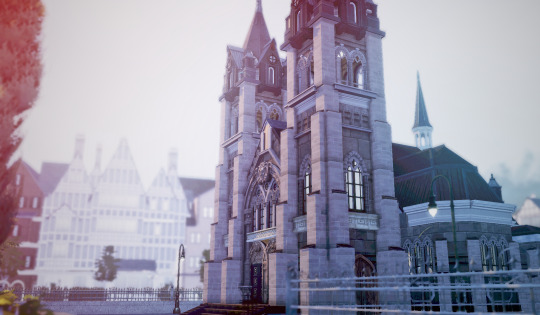

Active development of the town began at the end of the 19th - beginning of the 20th century, when a metallurgical plant was built within its borders. It was started by a society whose founders came from Belgium, Poland, Germany and France. And it was with the funds of the workers and employees of the Plant with the participation of the Metallurgical Society that the church of St. Nicholas was built.


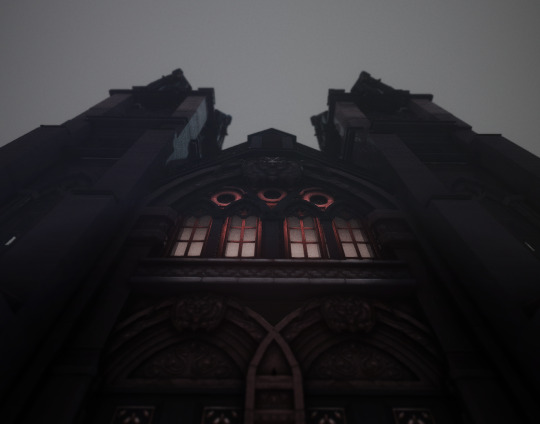
The church, built in the Gothic style, impresses with its silhouette at first glance. Its graceful turrets with upward spiers, massive doors with wrought iron ornaments and large arched windows create an impression of grandeur. This church belongs to the Roman Catholic Church and is one of the few examples of such architecture in Eastern Ukraine.

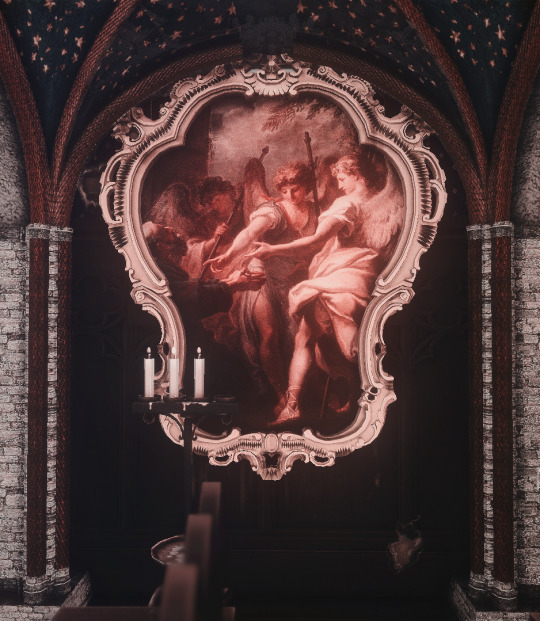

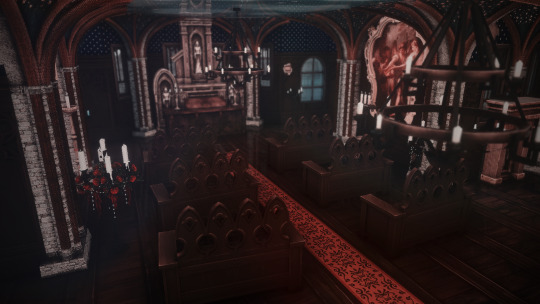

I changed the interior to a more gloomy and gothic one, since in the original there are only white walls and a few benches inside.
Also this time you don't need to install insane amount of mods: only 4 positions for the facade and a bit more if you also wanna have decorated interior.
More info, screenshots and DOWNLOAD here.
CC credits:
•@thejim07 •@anachrosims •@lilis-palace •The Regal Sim •@zx-ta •@annadedanann
#sims#the sims 4#sims 4#ts4#ts4 simblr#simblr#sims 4 build#ts4 build#sims 4 historical#the sims 4 historical#the sims 4 screenshots#ts4 goth#the sims 4 lots#sims 4 lot#ukrainian architecture#my sims buildings
285 notes
·
View notes
Text
The weird and wonderful history of Kowloon as a digital interactive space - Part II
This article is the continuation of a previous post.
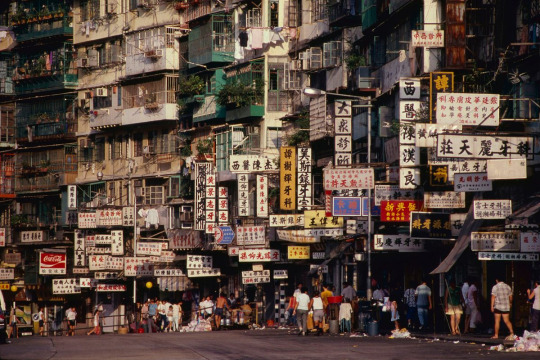
Any comprehensive history of 20th century Hong Kong is not complete without a chapter entirely dedicated to the architectural and urban planning puzzle that was Kowloon Walled City. Quite unlike any other slum in Asia or elsewhere in the world, the extreme conditions under which its inhabitants lived captured the attention of various international journalists and photographers whose reports of this accidental labyrinth, in turn, inspired some of the most remarkable artistic explorations of our time. In this regard, video games did not remain impervious to the powerfully stimulative imagery, as much a reference today as it was when its hardened concrete walls still stood tall.
Kowloon's Gate Suzaku VR - Jetman - 2017
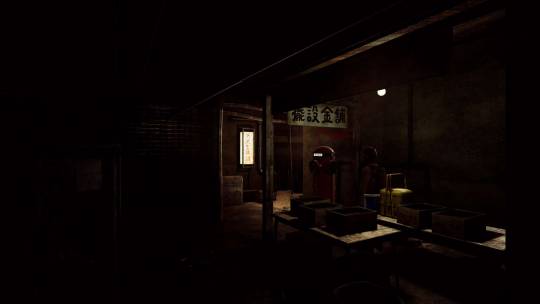
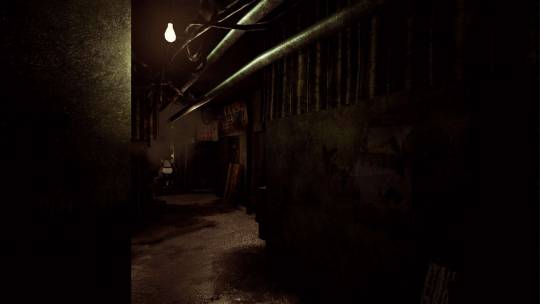
Kowloon's Gate made a most unexpected comeback twenty years after the original episode via the crowdfunded VR project Suzaku developed by Jetman, a studio founded by and composed almost exclusively of ex-SME/Zeque staff. While it is not the remaster many had hoped for, essentially consisting of a walking simulation through some redesigned locations from the original, it does a commendable job in faithfully replicating its instantly recognizable, light-starved alleyways in competent high-definition. It is also the only VR-compatible entry from this list, granting it a degree of uniqueness over its counterparts.
Stranglehold - Midway/Tiger Hill Productions - 2007
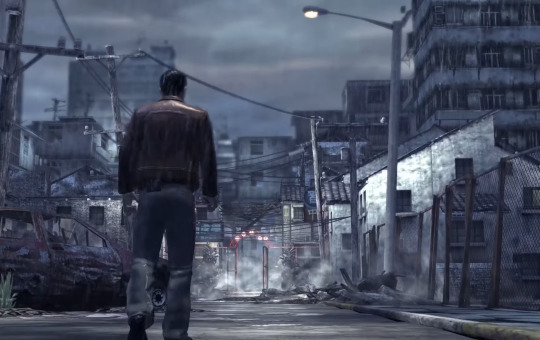
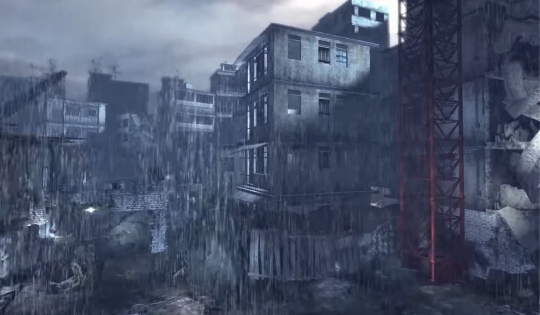
Stranglehold is the result of a collaboration with Hong Kong movie director John Woo, developed as a direct sequel to his heroic bloodshed classic Hard Boiled, featuring Chow Yun-fat in the role of detective 'Tequilla' Yuen in his unending confrontations with organized crime. One of the game's most unforgettable levels, Slums of Kowloon, takes place during a particularly rainy day, seemingly in those last days when the zone had been emptied of residents and demolition work was well underway. The visual representation of the quarter is suitably evocative, its buildings in complete state of disrepair, the remnants of local businesses or places of prayer still discernible from under the piles of steel and cement rubble.
Resident Evil 6 - Capcom - 2012


For all its shortcomings, Resident Evil 6 partly succeeds in taking the first two episodes' concept of parallel storylines and realizing it to a much fuller extent. Its choice of different characters translates into entirely different campaigns, locations and playing styles. The very first scene in Chris/Piers' campaign occurs in the fictional Chinese city of Lanshiang, modelled after real-life Hong Kong. The mayhem in the main streets forces the player to take a detour into a location named Poisawan, which bears a striking resemblance to the Kowloon district. Though an unofficial representation, it is among the most skilled replications of the scenery we find in the vast photographic repository of the area. The degree of minutiae with which the district's haphazard electric installation is replicated, alone, suffices to demonstrate a true commitment to authenticity.
Paranormal HK - Ghostpie Studio - 2020


Few would dispute that Kowloon is, itself, naturally conducive to sentiments of dread and anxiety. Paranormal HK is a 2020 made in China production reviving the defunct neighbourhood in a gripping, blood-curdling contemporary ghost story. The player is the cameraman of a paranormal-themed TV show exploring the zone during the evening of the Zhongyuan festival, a scheme suspiciously akin to that of Akira Ueda's 2004 game, Michigan: Report From Hell. As a result of the thorough research work performed by its creators, as well as the impeccable usage of contemporary 3D graphics techniques to achieve accurate lighting conditions, players may momentarily experience the feeling of walking into a photo of the actual city as it existed in the mid eighties.
Sifu - Sloclap - 2022
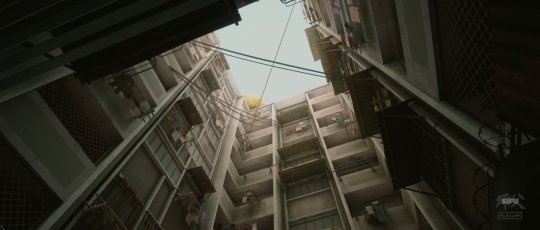
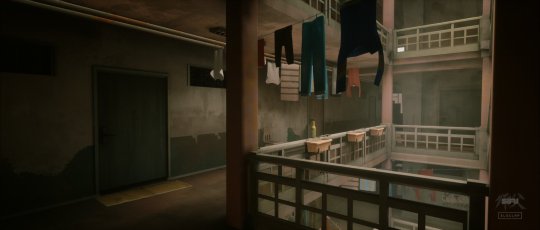

Notwithstanding of its renaissance during the 128-Bit era, the beat 'em up genre is commonly associated with the arcade games of the late 80s and 90s, the period of time when it flourished and, arguably, reached its zenith. The simplicity of controls and ease of access sufficed to attract players to the arcade cabinet, while the frequently extreme levels of difficulty of advanced levels ensured a steady flow of cash for arcade room owners and game development companies alike. Nevertheless, the genre has but perished and, in many aspects, recent years have indeed elevated it to unforeseeable degrees of complexity. Sifu, by Sloclap, synthesizes the elation of digital hand to hand combat simulation with the real-life complexity of mastering a martial art.
As is the case of previous entries in this list, Sifu makes no admitted reference to Kowloon or Hong Kong. However, the designers left little to the imagination in what pertains to their inspirations when taking on the task of constructing the game's environments. Another notable coincidence stems from the fact that this production was made possibly with the support from a celebrated independent game funding group going by the name Kowloon Nights.
Stray - BlueTwelve Studio - 2022


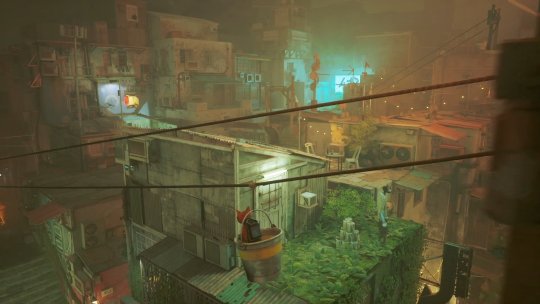
Stray is one of the most revered independent video games in recent memory, and justifiably so. The long development process yielded many benefits, judging from the consistency and attention to detail that engrossed many an avid player. That the main character is singularly charming feline may have played an equally crucial role.
The creators have made no effort to conceal the fact that the notorious Hong Kong district was a pivotal influence to the design of its nameless city. The first indication can be spotted in the game's earliest footage, in which a black cat traverses a street where a particularly conspicuous sign boasted the initials HK. Stray is less concerned with presenting a precise replica of Kowloon than it is about summoning the very essence of its atmosphere. Moreover, in an exquisitely poignant way, its ending lends an entirely new meaning to the term walled city. In the future, robots may well take the place of humans. Invariably, the Walled City is no more.
Slitterhead - Bokeh Game Studio - Work in Progress


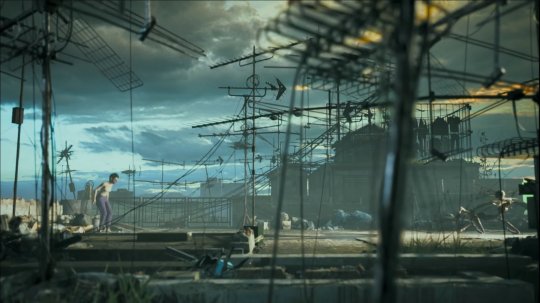
An sequence of unconscionable mistakes from the part of Sony Computer Entertainment's management galvanized Keiichiro Toyama to part ways with Japan Studio, as it once was, and establish his own game production label. Their debut title, Slitterhead, is described as a grotesque survival horror experience, a genre within which the author moves with matchless ease.
Among the few certainties regarding this project is the fact that it will take place prominently - if not exclusively - within the Kowloon City province. A wide variety of aspects included in the preview footage leave the viewer optimistic as to this being one of the most accomplished portrayals of the district ever seen in a video game. Subtle yet telling signs already demonstrate the creator's in-depth knowledge of the quarter's architecture and history.
Take, for instance, the suggestive image of the airplane flying mere meters above the top of the buildings. Although the growth of Kowloon was for the most part ungoverned, buildings did not rise above a certain height, even as inhabitants claimed for increased availability of space. This is due to the fact that airplanes landing at the nearby airport would be required to make their descent at relatively low altitude, performing a tight curve as they soared just above the enclave, thus preventing construction from expanding upwards. Another scene shows a child playing on the rooftops of the buildings, which once again is consistent with the documented habits of residents who, starved for sunlight and open space elsewhere within the city limits, had little alternative than to take the stairs all the way to the top.
Warehouse Kawasaki Arcade

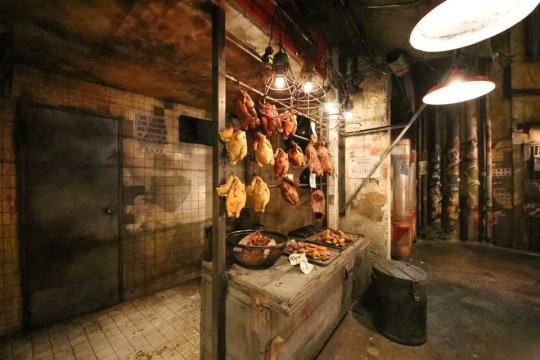

I would be remiss not to make some form of allusion to Warehouse Kawasaki, an arcade built to replicate the Walled City with unthinkable detail. Though its ultimate purpose was for visitors to engage in digital entertainment, the venue was scrupulously put together. Point in fact, many of the objects used in the construction of the five floor amusement centre were imported directly from Hong Kong. Like so many other Japanese arcades, it closed its doors in 2019.

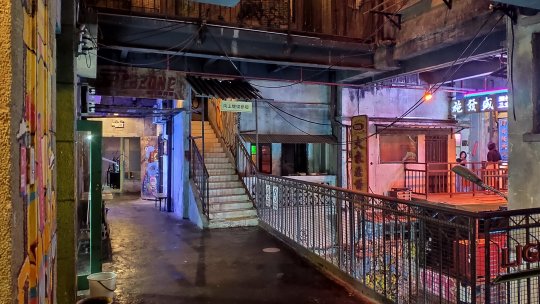
In recent years, a rather similar initiative was taken by the Chinese in their attempts to build unique mall spaces. The 文和友 malls in mainland China, found in Changsha, Guangzhou and Shenzhen, attempt to reproduce the walled city aesthetic. Local residents inform me that these are increasingly lacking in foot traffic, for which reason the majority of their stores are closed.
Other digital replicas of Kowloon

A number of other videogames set in or deriving inspiration from Kowloon could not be featured in this article.
A frequently cited reference in this context is the action/adventure game Fear Effect, one which I emphatically dispute. No doubt remains as to it being located in a futuristic version of Hong Kong, yet I could discern no parallels with the walled city, save for those scattered second-hand visual motifs that were no doubt imported from sci-fi classics such as Blade Runner or Ghost in the Shell.
The Utelek Complex stage of Deus Ex: Makind Divided presents a similar situation, where the overall atmosphere of the futuristic favela bears some resemblance to Kowloon, without meeting the specificity quota that would warrant a more comprehensive exploration.
The 2004 Shout! original Kowloon High-School Chronicle for the PS2 is a unique case, in that it borrows the city's name despite taking place in a massive, Tokyo underground dungeon that is later revealed to be a maze-like Egyptian pyramid. The odd choice of title remains unclear.
Shadowrun: Hong Kong game (screenshot above) contains a very direct mention of Kowloon as the place in which an entire episode comes to pass. Another project still in development, Kowloon's Curse (screenshot below), is following the lead of many popular independent horror games in recent memory by using a visual design and structure that elicits memories of the late Playstation/early Dreamcast era. A short prequel episode was made available earlier this year, for free.
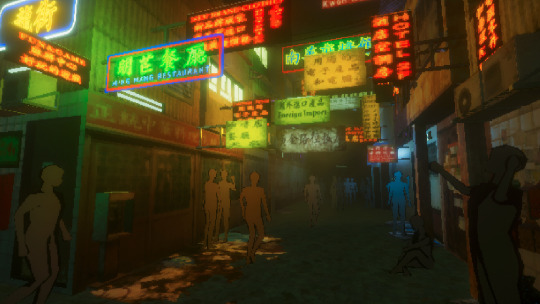
Additionally, I refrained from mentioning the Kowloon maps in Call of Duty: Black Ops or Counter-Strike: Global Offensive, as I perceive both games to be insufficiently relevant to merit study or contemplation.
A space that refuses to be forgotten
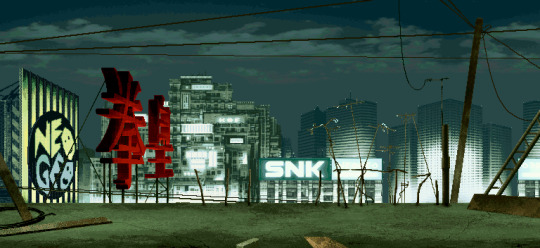
(China rooftop stage from The King of Fighters 2003)
It would be a gross overstatement to claim that Kowloon is a recurring location or level design motif in videogames. The relationship between digital games and the real life ghetto has been one of sporadic references. What makes the subject so engrossing pertains to the quality of the relationship, particularly that of a small cadre from among the titles featured in this article. Kowloon's Gate was one of the most relevant game creations of the 32-Bit era, a game deserving of reverence and cult following inside and outside Japan. Likewise, Shenmue II is the second instalment of a truly ground-breaking and highly advertised series whose production costs alone were unmatched until quite recently.
Moreover, this is an affair that is far from concluded. The unexpectedly high number of allusions to Kowloon in videogames released or revealed just last yet demonstrates that its aesthetic is still very much present in the minds and hearts of artists and designers working in the field. The walled city lives on as a digital demarcation that is certain to resurface time and again in years to come.
#kowloon's gate#kowloon's gate VR suzaku#jetman#stranglehold#john woo#kowloon walled city#hong kong#resident evil 6#poisawan#paranormal hk#ghostpie studio#sifu#kowloon nights#stray#slitterhead#bokeh game studio#keiichiro toyama#Warehouse Kawasaki#arcade#文和友
171 notes
·
View notes
